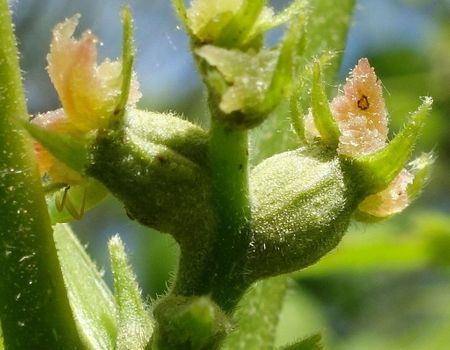Hickory

Scientific Name: Carya spp. (C. ovata, C. tomentosa, C. laciniosa, C. pallida)
Common Name: Shagbark hickory, mockernut hickory, pale hickory, white hickory, white-heart hickory
Plant Family: Juglandaceae (Walnut family)
Etymology: The word hickory derives from the Virginia Algonquian word pawcohiccora, hickory-nut meat or a milky beverage or condiment made from it. Carya is from the Greek karya (nut tree) from karyon (nut).
Parts Used: leaves, nuts, bark, wood, sap
Season: spring, summer, fall
Indigenous Uses
The nuts of hickory trees were used by native peoples for food and beverages. Hickory trees have various medicinal uses as a diaphoretic; digestive; emetic in large doses; for cold; female obstructions; steeped bark drunk to make limbs supple; bark chewed for sore mouth; inner bark astringent and detergent; dressings for cuts, and ruptured or cut blood vessels. Hickory served many craft uses ranging from blowgun darts, arrow shafts, handles for tools, firewood, barrel hoops, corn beaters, and inner bark for chair bottoms and finishing baskets. Its tough inner bark and root bark was used for lacing and cordage. It makes an excellent wood for bowmaking.
Edible Parts
Collect fallen nuts and discard any with small round holes, a sign of weevil grubs. Pry off the husks within a few days of collecting. Enjoy raw hickory nuts, toast in a dry skillet, and use like walnuts or pecans in recipes. For long-term storage, freeze in their shells to prevent their delicate oils from turning rancid. The bark can be boiled with sugar to make a flavorful syrup.
Hickory wood chips and shavings can be used in grilling and smoking blends.

This project was made possible by a grant from Maryland Humanities, with funding received from the Maryland Historical Trust in the Maryland Department of Planning. Maryland Humanities’ Grants Program is also supported by the National Endowment for the Humanities and private funders. Any views, findings, conclusions, or recommendations expressed on this website do not necessarily represent those of Maryland Humanities, Maryland Historical Trust, Maryland Department of Planning, or National Endowment for the Humanities.

